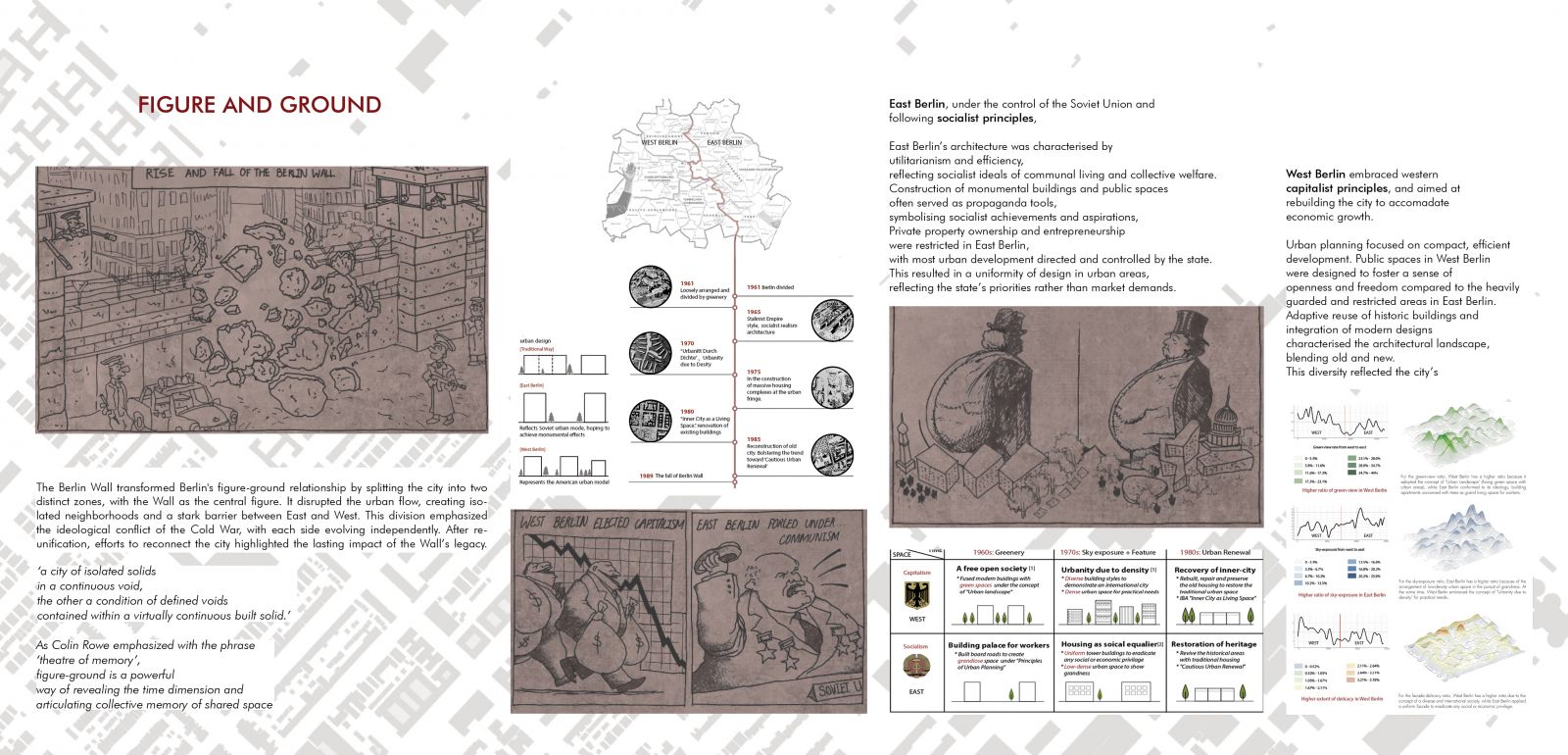Your browser is out-of-date!
For a richer surfing experience on our website, please update your browser. Update my browser now!
For a richer surfing experience on our website, please update your browser. Update my browser now!
The Berlin Wall Museum stands as a powerful testament to the tumultuous history of division that gave birth to a dichotomous East and West Berlin. The central spine is the focal point that splits the museum into distinct symbolic halves. Its walls are fragmented and staggered, to create a dynamic, evolving structure, that is symbolic of how the Wall divided families, cultures, and nations, but also serves as a reminder of how broken things can be rebuilt. Green planted spaces and walkways are woven throughout the terrace of the central spine. The foliage serves as a metaphor for growth and healing, a beacon of hope. The Museum’s architecture powerfully explores the ideological divergent realities between communism and capitalism. The East Berlin section, influenced by socialist realism and functionality, presents urban environments that were utilitarian, where the cityscape was shaped by the needs of the state rather than individual expression or innovation. Hence large public spaces of green cover conceal highly dense, functional spaces below. Monumental spaces in the name of ‘public good’ hide utilitarian intentions. Modular, uniform structures are repeated through the space, imitating East Berlin’s urban fabric. Conversely, the West side illustrates the influence of capitalist ideals, where the more open, free-flowing, public plaza, with function and recreation woven together, reflected aspirations of consumerism and innovation. Connected to the central wall on different levels, is a long linear exhibit that plays with volumes and enables a dynamic movement through the space. Non - uniform built structure symbolizes the freedom and individualism in the urban fabric of West Berlin. As visitors move between the two halves of the museum, the stark shift in atmosphere serves as a visceral reminder of the dogmatic divide that shaped the city’s form, its architecture, and its people. The Berlin Wall Museum serves as a bridge, not only between East and West Berlin, but between the past and the future, offering visitors the opportunity to engage with history and, perhaps, to reimagine a world without walls.
View Additional Work





